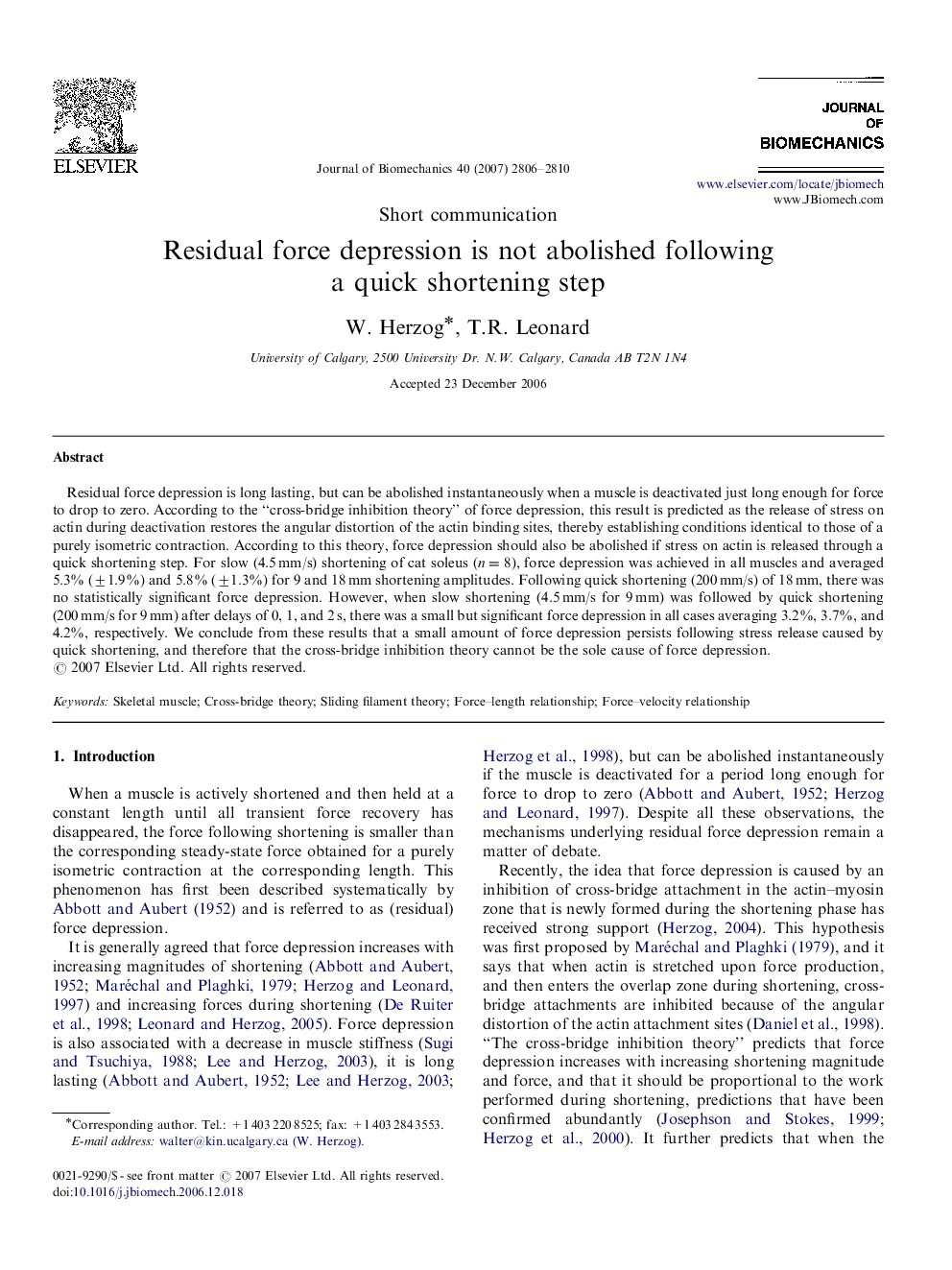| کد مقاله | کد نشریه | سال انتشار | مقاله انگلیسی | نسخه تمام متن |
|---|---|---|---|---|
| 874323 | 910333 | 2007 | 5 صفحه PDF | دانلود رایگان |

Residual force depression is long lasting, but can be abolished instantaneously when a muscle is deactivated just long enough for force to drop to zero. According to the “cross-bridge inhibition theory” of force depression, this result is predicted as the release of stress on actin during deactivation restores the angular distortion of the actin binding sites, thereby establishing conditions identical to those of a purely isometric contraction. According to this theory, force depression should also be abolished if stress on actin is released through a quick shortening step. For slow (4.5 mm/s) shortening of cat soleus (n=8), force depression was achieved in all muscles and averaged 5.3% (±1.9%) and 5.8% (±1.3%) for 9 and 18 mm shortening amplitudes. Following quick shortening (200 mm/s) of 18 mm, there was no statistically significant force depression. However, when slow shortening (4.5 mm/s for 9 mm) was followed by quick shortening (200 mm/s for 9 mm) after delays of 0, 1, and 2 s, there was a small but significant force depression in all cases averaging 3.2%, 3.7%, and 4.2%, respectively. We conclude from these results that a small amount of force depression persists following stress release caused by quick shortening, and therefore that the cross-bridge inhibition theory cannot be the sole cause of force depression.
Journal: Journal of Biomechanics - Volume 40, Issue 12, 2007, Pages 2806–2810